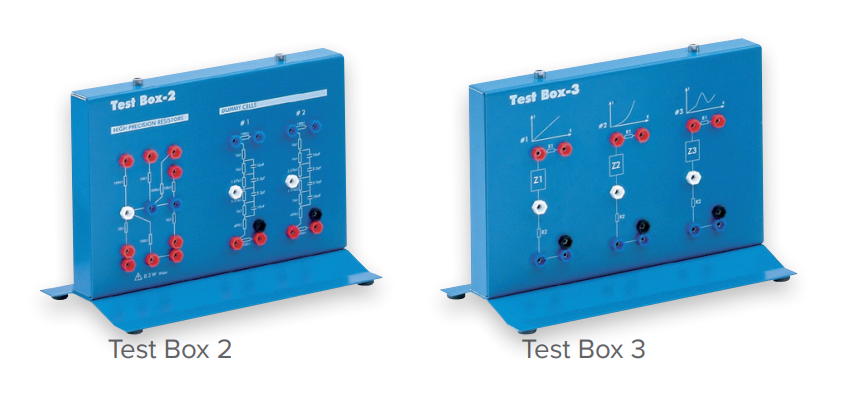Connectors, dummy & test cells
Dummy cells and test boxes
When everything else fails
Test boxes have the great advantage of being composed of electrical circuits. They can have various functions: calibration, troubleshooting and teaching.
Dummy cells are used to perform a qualitative check of your instrument, in the situation where it does not perform as expected with your electrochemical system. We have one dummy cell for standard channel and one dummy cell for boosters. A dummy cell is composed of R/C circuits.
Test Box 2 combines high precision resistors for calibration of the system and dummy cell circuits. Precision resistors can be used to quantitatively check your instrument, in the situation where it does not perform at the expected performance with your electrochemical system.
The Test Box 3 is the most advanced of all and should be renamed Teaching Box. It is composed of electrical circuits that mimic some real electrochemical systems: i) the first circuit is composed of R/C circuits and mimics a linear system (which does not exist in the electrochemical world); ii) the second circuit mimics an electrochemical system whose behaviour follows the Butler-Volmer, Stern-Geary or Wagner-Traud behaviour and hence is not linear; iii) the third circuit mimics an active system which then passivates.
Specifications and ordering information
| Product | Contents | Catalog No. | Purpose |
| Dummy cell 3 | R + R/C + R/C circuit | 094-111/3 | standard check |
| Dummy cell for booster | 1 power resistor, 5 mOhm Accuracy: 1% Temperature coefficient: ±50 ppm/°C | 092-32/1 | standard check |
| DC-BCS (AC) | R+R/C+R/C and supercap (1 F, 5.5 V) | 096-016 | EIS verification |
| DC-BCS (DC) | Three test resistors with 1% precision. | 096-016/1 | DC verification |
| Test Box 2 | Several circuits with high precision resistors | 092-22/6 | calibration and validation |
| Test Box 3 | Three circuits: linear, two non-linear systems (Tafel & passivating) | 092-22/7 | for teaching and demonstration |







